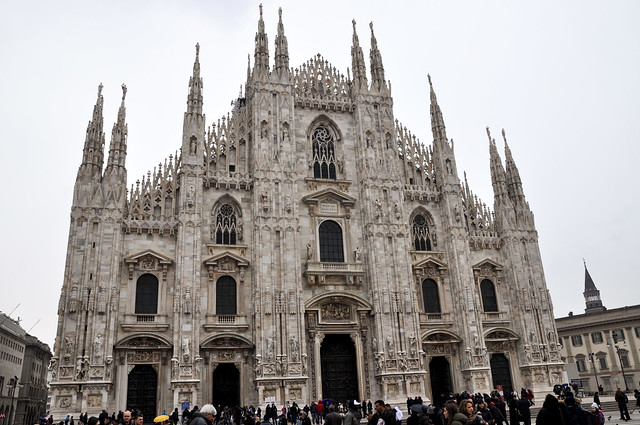
O Duomo é talvez o meu monumento preferido da cidade de Milão (ainda não conheço todos e daí o talvez). A sua grandiosidade e complexidade fazem com que mesmo que seja a segunda vez que o visito, fica sempre algo por ver, sempre a sensação de que ainda não o conheço e que quero voltar com mais tempo. É verdade que não tivémos tempo para ir ao topo e aproveitar a vista da cidade, imagino que seja o tipo de coisa que pede melhor tempo que o dia chuvoso que apanhámos.
The Duomo is perhaps my favorite monument in the city of Milan (still do not know all and hence the perhaps). Its grandeur and complexity make, even if it's the second time I visit, always something worth seeing, I get that feeling that still do not know it and want to go back with more time. It is true that we had no time to go to the top and enjoy the view of the city, I imagine it's the sort of thing that asks for better weather than the rainy day that we had.

A quantidade de detalhes e o facto de ser uma das maiores catedrais do mundo levaram a que demorasse cerca de quinhentos anos a ser construída. Em 1386 lançou-se a primeira pedra para a sua construção e hoje podemos admirá-la (quase) completa. Tem mais de três mil e duzentas esculturas que podemos contemplar no seu exterior, a impressionante porta central foi esculpida por Ludovico Pogliaghi no século XIX. Está dedicada a Madonna cuja estátua podemos ver a coroar o topo do Duomo.
The amount of detail and the fact that it is one of the largest cathedrals in the world led to it took about five hundred years to build. In 1386 the first stone was layed for its construction and today we can admire it (almost) complete. Has more than three thousand and two hundred sculptures that we can contemplate in its exterior, the impressive central door was carved by Ludovico Pogliaghi in the nineteenth century. Is dedicated to Madonna whose statue we can see crowning the top of the Duomo.
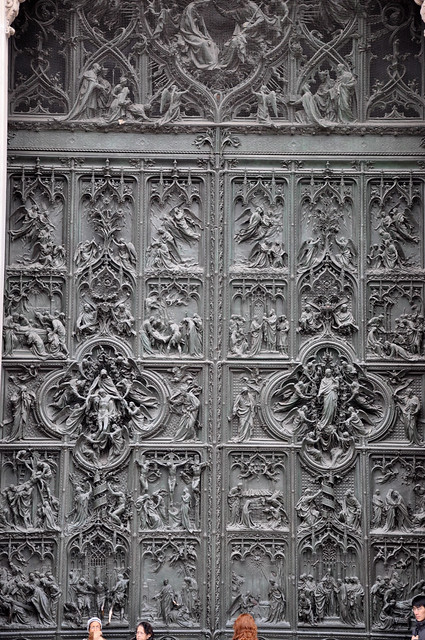
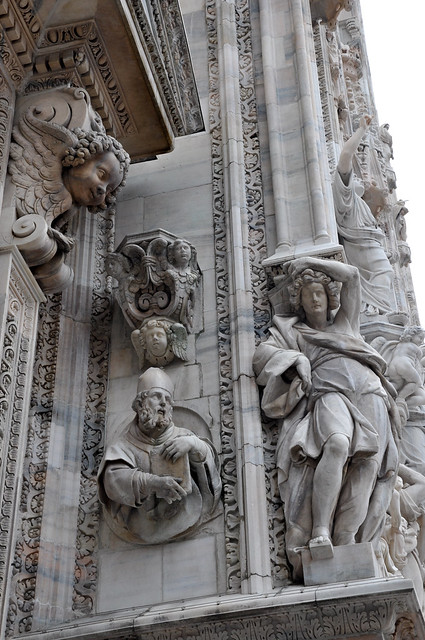
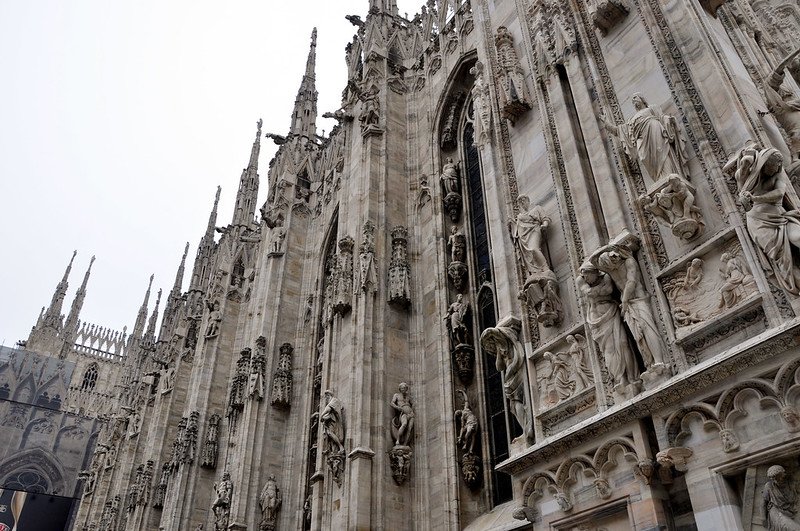
Uma vez dentro, a sua dimensão volta a surpreender e apesar do seu aspecto sombrio que te transporta até á época do estilo Gótico, aos momentos mais obscuros da sua história. Impressionam os vários sarcófagos e a estátua de São Bartolomeu, um dos doze apóstolos que ninguém sabe como morreu mas dizem ter sido esfolado vivo e por isso nesta representação de Marco D'Agrate com a sua pele a servir de manto.
Durante o Rito de Navola, o prego sagrado que dizem ter sido retirado da mão direita de Jesús Cristo aparece ao público para ser venerado e é colocado no altar principal.
Once inside, it's size continues to surprise and despite the fact that its dark aspect that transports you until the time of the Gothic style, the darkest moments of their history. The various sarcophagi are impressive and the statue of St. Bartholomew, one of the twelve apostles that no one knows how he died but legend says he was skinned alive and so this representation of Marco D'Agrate with his skin used as a cloak.
During the Rite of Navola the sacred nail that is said to have been taken from the right hand of Jesus Christ appears to the public to be revered and is placed on the main altar.
During the Rite of Navola the sacred nail that is said to have been taken from the right hand of Jesus Christ appears to the public to be revered and is placed on the main altar.
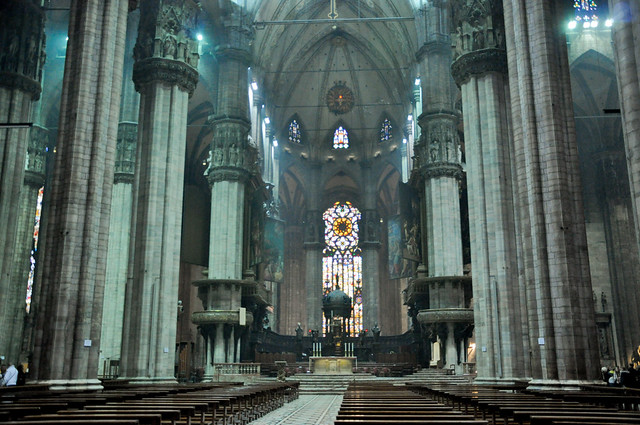
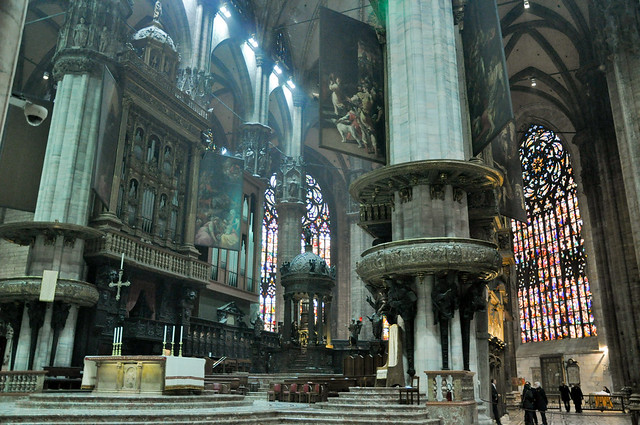
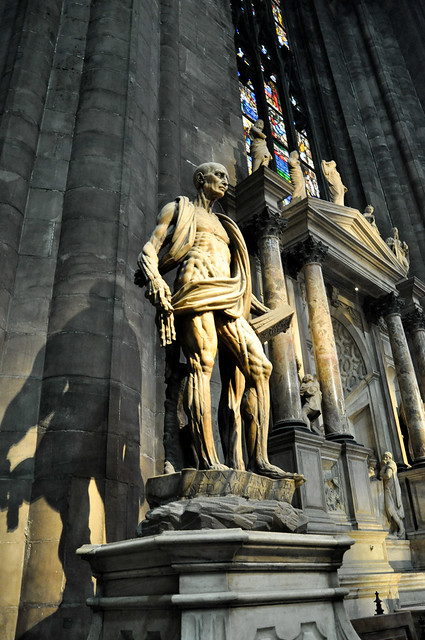
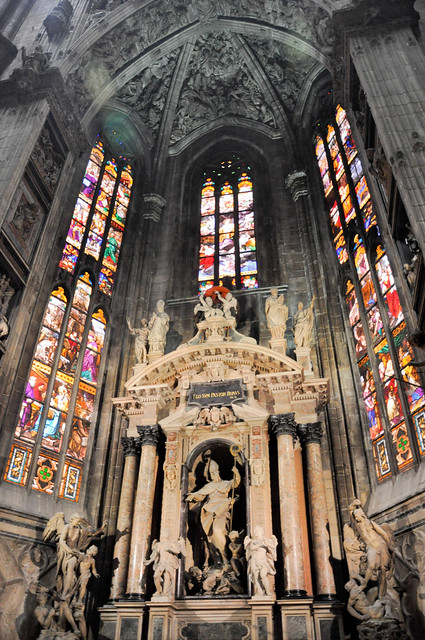

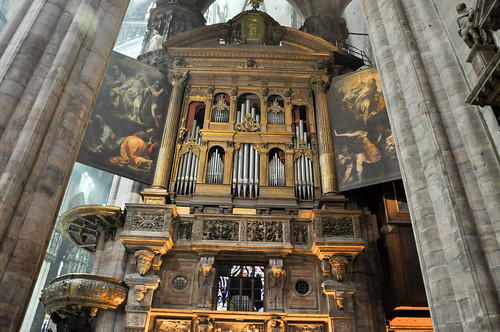
Entrada: Gratuito. 2€ para um ticket fotografía (se quiseres tirar fotos supostamente deverias pagar este fee mas vi gente a tirar que não o tinha) e para ter acesso ao último andar tem que se pagar 12€ por pessoa para ir no elevador.
Free entrance. 2€ a photograph ticket (if you want to take photos you are supposed to pay this fee but I did saw people taking photos that didn't had it) and to go to the terrace one most pay 12€ to go in the elevator.
Our guide of:

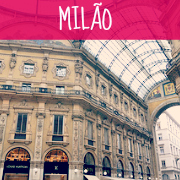
Sem comentários:
Enviar um comentário